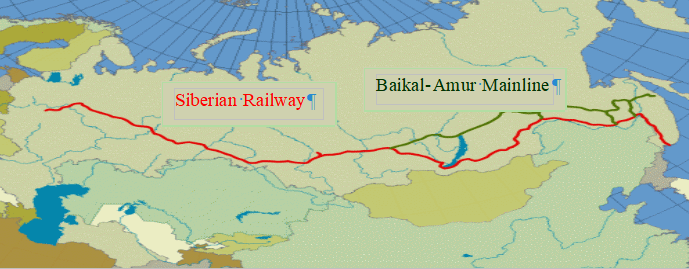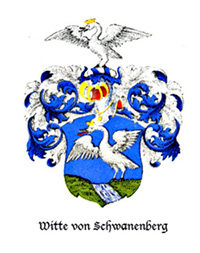TRANS-SIBERIAN RAILWAY /WITTE BAIKAL AMUR MAINLINE /STALIN

MAKING EURASIA TRANSITABLE
As Finance Minister Sergei Witte pronounced in 1902: “Joining Europe and Asia by a continuous rail connection, that road becomes a global means of transit, on which the exchange of goods between West and East will have to flow. China, Japan, and Korea, with a population of half a billion people.” (…) “…with this great steam-propelled transit system producing more rapid and cheaper communication, and exchange of goods, enter into closer relations with Europe, a market, with a developed manufacturing culture, and thereby create a greater demand there for the raw materials of the East.” “Thanks to the Siberian Rail Road, (…) European know-how, and capital will find for itself an extensive new field of employment for the exploration and development of the natural riches of the Eastern nations.” (The Schiller Institute ICLC, Helga Zepp-LaRouche, Bad Schwalbach Conference, How to Reconstruct a Bankrupt World, The Eurasian Land-Bridge Concept 2003, pp. 21-22))
– The railroads became the chief instruments of progress. There was created an entire system of main and secondary railroad lines, connecting the regions and which was necessary for the growth of national wealth.
With the help of all types of railroads, the slogan was (…) make Russia “transitible”. (F. W. Wcislo U.S.A 2011, p.163
– The idea was to connect the Far North to central European Russia and the Baltic Sea as well as opened “a new transit route to Europe for the east and Siberia”. The Ural Mountains with their rich mines, more tied to both central Russia and Siberia. The south promising to become rich industrial centre, was the site of new construction and both Caucasus and Central Asia were tied to central Russia – and all of this was set within “a detailed economic study” of the country, an investigation of its region, the elucidation of its industrial and agricultural needs. (F. W. Wcislo U.S.A 2011, p. 163 )
P 161 Central to that vision, was the Trans-Siberian Railroad. The “great Siberian way” would foster Russian interests in Asia by opening free access for the products of Russian industry to its huge markets (…) and (…) channelling the great traffic of cultured Europe through Russia to the far east. Population from European Russia would be resettled “into Sibera and east”, thereby assuring that, given the Russian people’s penchant for colonization our might is created and strengthened. A Siberian expanse was envisioned, linked east to west by rail, and north to south by river system that themselves might become more open to international shipping, moving seasonally along its Arctic coast, which possibility the ministry was exploring and surveying. It was sponsoring commercial expeditions as a first step toward organizing ocean transit from the Pacific coast terminus of the Trans-Siberian Railroad at Vladivostok to the ports of China and Japan. Developing commerce with Central Asia and Persia also was a priority especially along the trans-Caspian railroad that bisected these imperial possessions from the Caspian to Bukhara and Samarkand, tracing out a southern boundary of the empire’s authority and commercial influence in the region. F. W. Wcislo U.S.A 2011, p 161
P 161 In terms of seeking out markets, commercial expansion in the natural sphere of Russian political and commercial influence in the countries of the east which are in close proximity to us and are less cultured, the report proclaimed, is an immediate priority. Central to that vision, as we have seen, was the Trans-Siberian Railroad. The “great Siberian way” would foster Russian interests in Asia by opening free access for the products of Russian industry to its huge markets (…) and (…) channelling the great traffic of cultured Europe through Russia to the far east. Population from European Russia would be resettled “into Sibera and east”, thereby assuring that, given the Russian people’s penchant for colonization our might is created and strengthened. F. W. Wcislo U.S.A 2011, p 161
Stalin’s Baikal Amur Mainline was a strategic alternative to Siberian Railway
The Baikal–Amur Mainline (Baikalo-Amurskaya Magistral’), also known as BAM, is a 4,300 km long railway line that runs north and parallel to the Trans-Siberian Railway, crossing Eastern Siberia and the Russian Far East, some of Russia’s least hospitable lands.
It was built primarily for military reasons as a strategic alternative to the Trans-Siberian, which runs quite close to the Chinese border and was hence considered more vulnerable. The project was initiated in 1930 and, at least till 1953, its construction was largely operated by Gulag prisoners, including Germans and Japanese war prisoners (it is estimated that around 150,000 people died in the process). After Stalin’s death, works came to a halt and were restarted in 1974 under Brezhnev, to be completed in the late ’80s.
While it costed billions of rubles, the BAM is significantly underused, and very few foreigners ever use it. Hence, contrary to the cities along the Trans-Siberian, which have developed through increased train traffic, the towns along the BAM have remained virtually unchanged and seem to belong to a land forgotten by time.
